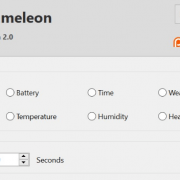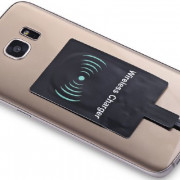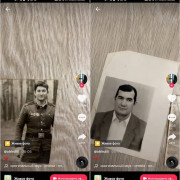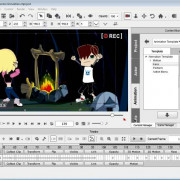Diskdigger pro на android ⭐
Содержание:
- A big update to DiskDigger for Android
- Saving by FTP uploading
- News for April 2020
- News for July 2016
- Lost your files? Don’t panic! Dig them up with DiskDigger.
- Common Features
- Cleaning up
- DiskDigger for Android no longer requires rooting! (with caveats)
- Saving locally
- News for January 2021
- Digging deep
- News for December 2018
- Вопросы и ответы о DiskDigger
- Ключевые особенности
- DiskDigger FAQ
- News for November 2018
- Скачать DiskDigger
- News for February 2014
- News for August 2020
A big update to DiskDigger for Android
Wed, 09/09/2015 — 22:38 — Dmitry Brant
The DiskDigger app for Android is now better and easier to use than ever! A lot of its low-level recovery logic has been updated, allowing it to provide you with all of this new functionality:
- Recovered files can now be saved directly to Google Drive, Dropbox, and other cloud storage apps installed on your Android device.
- Recovering files via email (Gmail, Yahoo mail, etc.) has been improved, with each file being a separate attachment in the email.
- Lots of minor cosmetic enhancements for better compliance with Material Design guidelines.
- Improved recovery of .MP4 videos and .ZIP files.
- Added support for recovering .RAR archives.
So, wait no longer: get DiskDigger or DiskDigger Pro from the Google Play Store today! And don’t forget — DiskDigger for Windows remains an excellent choice for your recovery needs on your desktop PC, with more updates coming soon.
Saving by FTP uploading
The last method allows you to upload the recoverable files to an FTP server. In order to do this, you need to have access to an FTP server that is online, with the correct credentials for accessing and uploading to the server. DiskDigger will display a dialog for you to enter the FTP server’s host name, and your user name and password for logging on to the server:
You can also enter an optional subdirectory on the server where the files will be uploaded.
Tap «OK» to begin the uploading process. If the login to the server is successful, you will see status updates at the bottom of the screen, until all files have been uploaded. The files will be named based on the location where they were found.
News for April 2020
Thu, 04/23/2020 — 14:00 — Dmitry Brant
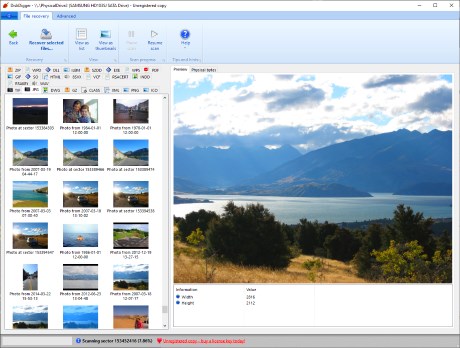
Time for another excellent update to DiskDigger for Windows, as well as DiskDigger for Android! Here is what’s new in the Windows version:
- Performance improvements when undeleting files from NTFS filesystems on certain drives.
- Performance improvements when recovering files from HFS+ (Apple) and ext4 (Linux) filesystems.
- Improved support for recovering damaged or corrupted DVD and CD-ROM media.
- Improved detection of VOB video tracks on certain DVD media.
- Added support for recovering and previewing ILBM (Amiga bitmap) images.
- Improved support and detection of USB floppy drives.
- Fixed an issue when reading fragmented files from FAT12 partitions.
Download DiskDigger now to recover your precious data from any kind of media that your PC can read.
And here is what’s new in the Android version:
- Improved compatibility with more Android 10 devices.
- Improved compatibility with older (KitKat and earlier) devices.
- Better performance of the Wipe Free Space feature.
Get the Android version of DiskDigger now from the Google Play Store to recover photos and other types of files from the internal memory of your phone or tablet.
News for July 2016
Sun, 07/03/2016 — 22:44 — Dmitry Brant
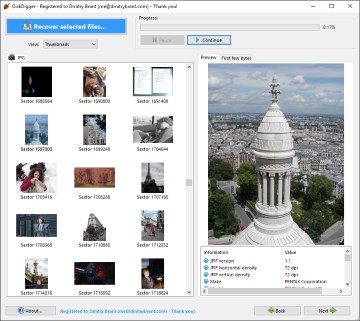 The latest version of DiskDigger for Windows is easier to use and more powerful than ever! Along with an improved interface with better instructions and visual cues, DiskDigger comes with these great new features:
The latest version of DiskDigger for Windows is easier to use and more powerful than ever! Along with an improved interface with better instructions and visual cues, DiskDigger comes with these great new features:
- In «dig deep» mode, there is now a new option to show files that were likely emptied from the Recycle Bin. If you’ve accidentally emptied the Recycle Bin, this will make it easier to find the files that were in it.
- In «dig deep» mode, recoverable files are now sorted by last-accessed time, so that files that were deleted more recently are likely to be near the top of the list. (You may still sort the files by name, size, or date by clicking on the corresponding column headers.)
- General performance improvements when filtering recoverable files in «dig deep» mode.
- Added support for recovering Lytro raw images (.LFP).
- Improved detection of 3D .MPO images.
- DiskDigger now requires version 4.0 of the .NET Framework. This means that it will run on Windows 10, Windows 8.1, and Windows 8 without needing any additional components. For running on Windows 7, Windows Vista, or Windows XP, you may need to install .NET 4.0 if it’s not already installed on your system.
- Experimental support for running on Mac OS X!
Download DiskDigger for Windows now!
Lost your files? Don’t panic! Dig them up with DiskDigger.
DiskDigger is a tool that undeletes and recovers lost files from your hard drive, memory cards, USB flash drives — you name it! Whether you accidentally deleted some documents or photos from your computer, reformatted your camera’s memory card, or want to see what files are lurking on an old USB drive, DiskDigger is here for you. See the complete list of features to learn more.
DiskDigger has already helped millions of users around the world recover their lost files. What can it help you find today? Download it now and see for yourself!
Works with Windows 10, Windows 8, Windows 7, Windows Vista, Windows XP, and Linux.
Common Features
- Works in Windows 10, Windows 8, Windows 7, Windows Vista, and Windows XP. Both 32-bit and 64-bit versions of Windows are supported.
- Also works in Linux.
- View recoverable files as a list, or as thumbnail previews.
- Thumbnails will show previews of image files, album art from MP3 and WMA files, and icons from executable files!
- Selecting a recoverable file brings up a full preview of the file (insofar as possible). For image files, it will show the image (with pan and zoom). For document files, it will show a text-only preview of the document. For certain audio files, it will allow you to play back the sound.
- Previews of JPG and TIFF files will show EXIF information (camera model, date taken, sensor settings, etc.).
- Previews of MP3 files will show ID3 information (artist, album, genre, etc.).
- Previews of ZIP files will show a list of files contained in the archive.
Cleaning up
Along with recovering your files, DiskDigger gives you the ability to delete them permanently, so that they will no longer be recoverable. Next to the «Recover» button you’ll find the «Clean up» button, which will take you to Clean Up mode:
The Cleanup screen is divided into two tabs: «Thumbnail caches» and «Photos.» This is because a thumbnail cache (a file that contains multiple thumbnails) must be deleted as a whole, which would delete all the thumbnails contained in it. Therefore the app allows you to examine these thumbnail caches, as well as individual photos, and select which ones you want to delete.
Cleanup Mode is currently available only in the Basic Scan. Making it available in the Full (rooted) scan is quite a bit more complex, and will be available in a future version.
Note: Since the deletion is done at the filesystem level, the contents of the deleted files are not physically wiped from the device’s memory, and may still be recoverable if the device is rooted. In fact, even physical wiping of the files’ contents is unreliable with flash memory, which employs wear-leveling that might redirect the overwritten data to a different physical location.
Wiping free space
Another powerful feature provided by DiskDigger is the ability to wipe the free space on your device’s memory. This is useful for ensuring that your deleted files (which are now considered free space in your device’s memory) will no longer be recoverable, even using tools like DiskDigger.
The «Wipe free space» feature can be accessed directly from the main screen of the DiskDigger app (underneath the selections of Basic Scan and Full Scan). It can also be accessed while performing a Full Scan by tapping the Cleanup button.
Like the «Clean up» feature, the «Wipe free space» feature is still a bit experimental, so you should be aware of some of its caveats and limitations:
- Wiping of free space is done by creating a temporary file and filling it with random data, until it consumes the entire amount of free space on your device. When the temporary file begins to reach the limit of free space, the Android system will usually display a notification that your available space is running out. You should ignore this notification until the wipe process is complete. When it finishes, it will delete the temporary file and free up the remaining space again.
- It is possible that the Android system will stop DiskDigger from being able to write to the temporary file before the memory is completely full. This means that there is a possibility that not all of the free space will be wiped, and some deleted data might still be recoverable. You can always re-run DiskDigger and scan your device’s memory to ensure whether the wipe was successful.
- The wiping is done only on the internal memory of the device. The ability to wipe an external SD card will be added in a future version.
- It’s important to note that because the wiping is done by overwriting all the free space, it means that the process inflicts a significant amount of wear on the device’s memory. This can potentially shorten the life span of the memory, and should be performed sparingly, and only when necessary.
DiskDigger for Android no longer requires rooting! (with caveats)
Sun, 12/13/2015 — 22:24 — Dmitry Brant
Huge news! The DiskDigger app for Android no longer requires the device to be rooted. To be more precise, the app will still work better on rooted devices (it will scan more thoroughly, and rooting is still recommended), but it now has basic functionality to recover photos even on regular non-rooted devices!
If your device is not rooted, DiskDigger will now perform an exhaustive scan of the various caches that your device maintains. These caches often contain lower-resolution versions of the photos on your device. When one of the original photos is deleted, the cached version does not get deleted, allowing DiskDigger to find and recover it for you. This means that, on non-rooted devices, DiskDigger will generally recover lower-resolution versions of your deleted photos. This is a limitation that cannot be overcome at this time (or without rooting).
Of course, if your device is rooted, DiskDigger will continue to perform as it has been, scanning the entirety of your device’s memory for all traces of photos and other types of files.
The app has also been updated to fully support Android Marshmallow (6.0). So, what are you waiting for? Install DiskDigger on your Android device, and see what it can recover!
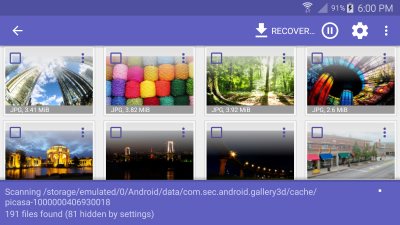
Saving locally
The second option allows you to save the recoverable files back to the local device (to the internal memory or SD card of the same device from which the files are being recovered).
Saving on Android 5 (Lollipop) and above
This will take you to the standard Android folder picker that you can use to select the folder into which the files will be saved. Unfortunately the standard picker can be a bit difficult to use for the first time. If you see an empty screen with an «Open from» title like in the screenshots below, then follow these steps:
- Swipe away the «Open from» panel to the left.
- Tap the overflow menu (three dots) in the top right corner, and select «Show SD card» or «Show internal memory».
- Tap the navigation menu (three lines in the top left corner, and you should now be able to pick the SD card or Internal memory, and navigate to the exact location where you want to save the files.
Saving on Android 4.4 (Kitkat) and below
You will be prompted to select the directory where the file(s) will be saved. The directory defaults to the location of the memory card on your device (most commonly «»). The directory picker allows you to navigate through the directory structure of your device:
Important note: You should use this method only if you can save the files onto a different partition than the one from which the files are recovered. For example, if you’re recovering files from internal memory, you should save the files onto an external SD card (not internal memory). It is not recommended to save the files onto the same partition from which they were recovered, because that would risk permanently overwriting the very same files that are being recovered! You should attempt to use one of the other methods of saving the files (save to another app or FTP upload) before resorting to saving locally.
News for January 2021
Mon, 01/18/2021 — 00:29 — Dmitry Brant
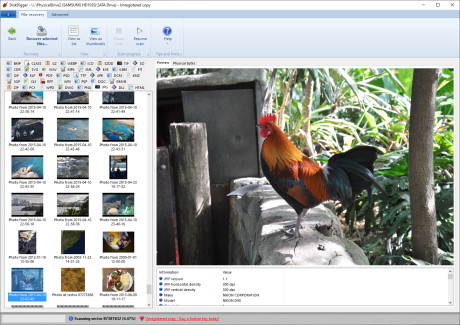 It’s time for another important update to DiskDigger for Windows! Here is what’s new in the latest version:
It’s time for another important update to DiskDigger for Windows! Here is what’s new in the latest version:
- Improved accuracy and efficiency of detecting certain raw camera formats, including Nikon (NEF) and Canon (.CR2).
- Revamped and improved recovery of .MP3 audio files. Will now recover a wider range of .MP3 files from different sources and devices.
- Added support for recovering .AAC audio files.
- Added an advanced option to perform a more thorough search for .MP3 or .AAC audio. After selecting «Dig deeper» mode (when selecting the types of files to search for), go to the Advanced tab and select the «Extra deep MP3 search» option. This option is still experimental and is not selected by default, since it can produce false positives.
- Added another advanced option to start the scan from a specific sector on the disk. When selecting the types of files to scan, go to the Advanced tab and enter the custom sector number in the «Starting sector to search from» text box.
Download DiskDigger for Windows now to search any of your hard drives, USB drives, or memory cards for deleted files!
And if you need to recover files from your Android device, try the DiskDigger app from the Google Play Store! Stay tuned for updates to the app, which will make recovering data even simpler and more effective.
Digging deep
The «dig deep» mode makes DiskDigger «undelete» files from the file system on your disk. Under most file systems, when you delete a file, it doesn’t actually get wiped clean from the disk. Instead, the file system will simply mark the file as deleted, and no longer show you the file when you browse the contents of the disk. DiskDigger scans the file system for such deleted files, exposes them to you, and allows you to bring them back as ordinary files again.
However, this kind of process has several limitations. Firstly, DiskDigger has to be «aware» of what file system is present on the disk. Therefore, it only supports certain types of file systems:
- FAT — Used on floppy disks (FAT12), most USB flash drives and memory cards under 4 gigabytes, and older hard disks (FAT16).
- FAT32 — Used on slightly older hard disks and most USB flash drives and memory cards with 4 gigabytes or greater.
- NTFS — Used on most modern hard disks.
- exFAT — Used on some modern hard disks and high-capacity memory cards and USB drives.
Fortunately, the above list of file systems covers the vast majority of the world’s users, so this limitation is trivial compared to the next one.
After a file is deleted, the file system is completely free to overwrite the contents of the deleted file with new data. From the point of view of the file system, the deleted file is now as good as free space, ready for the taking. The next file that is saved by the file system may just be written on top of the deleted one. If that happens, the deleted file will truly be lost forever.
So, a general rule would be something like this: The undelete process is effective only for files that have been deleted very recently. Or, more precisely: The probability of successfully recovering a file is inversely proportional to the amount of time elapsed after deleting it.
News for December 2018
Sat, 12/15/2018 — 23:55 — Dmitry Brant
This month’s update to DiskDigger for Windows is all about performance, stability, and reliability. When it comes to recovering your data, DiskDigger is more dependable than ever, thanks to these improvements:
- Better fault tolerance against drives that have errors, e.g. bad sectors, controller malfunctions, etc. The program will respond to a wider range of errors, and will allow you to continue past the error, or stop and recover any files that it has found so far.
- Steamlined disk access and caching, which allows for optimized performance when scanning and recovering files.
- Improved efficiency when recovering certain types of files, including .JPG, .DOC, and .ZIP.
In other news, DiskDigger for Android has improved as well, with the ability to enter Cleanup mode at any time during the scan, by first pressing the Pause button. Enjoy!
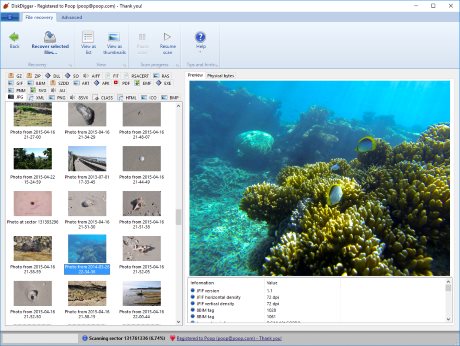
Вопросы и ответы о DiskDigger
Я загрузил diskdigger, чтобы восстановить удаленные фотографии внутренней памяти, но фотографии в оригинале не восстановились. У меня есть Samsung Galaxy Note 4, и Diskdigger просит меня рутировать мой телефон.
Ответ. Вы не установили root, поэтому программа обнаружила только эскизы фотографий, к которым был доступ. Для полноценного восстановления предоставьте Diskdigger’у права суперпользователя.
Я хочу восстановить удаленные фото на телефоне meizu m3s. Рут доступ сделать не получается, так как я забыл пароль от аккаунта Flyme. Сторонние программы для рут прав не поддерживают модель моего телефона. С помощью DiskDigger мне удалось восстановить удаленные фото, но в плохом качестве.
Вопрос: как восстановить удаленные фото в исходном качестве без рут прав? Они были удалены именно с памяти телефона.
У меня телефон Xaiomi Redmi Not 5, я на нем удалила фотографии, точней, саму папку с фотографиями с внутренней памяти телефона и при этом у меня не было никаких синхронизаций с облаками. Даже удаляя фотографии, не папку, я их находила… Какими только приложениями не пыталась их найти, но все четно. Самым распространенным «DiskDigger». Помогите, пожалуйста. Может как-то через ПК можно. Я уже мало на что надеюсь, так жалко…
Я нашла свои удаленные фотографии через DiskDigger, но проблема в том что качество фото очень плохое, как восстановить фотографии с изначальным качеством ?
Хотела на телефоне перенести файлы в другую папку, через компьютер вырезала файлы, перешла в нужную папку, нажала вставить, но файлы не появились и в начальной папке их тоже нет. Телефон находится на гарантии,поэтому рутирование-не выход.Программа Disk Digger восстановила файлы,но в очень плохом качестве. Что можете порекомендовать в этом случае? Фото очень важны…
Сегодня перекидывала папку со скриншотами с телефона (Samsung Note 4) на компьютер. Папку я вырезала по глупости и хотела вставить, но произошел какой-то сбой — компьютер перестал видеть телефон и файлы так и не переместились; однако, и в телефоне скриншоты пропали, пыталась их найти везде. Так как эти скрины очень важные, хотела бы их восстановить. Попробовала бесплатные утилиты — disk digger, photo recovery, но они находят все, кроме этих самых скриншотов. Скажите, пожалуйста, есть ли какой-то шанс их восстановить?
У меня на телефоне пропали фотографии когда я скидывал их по беспроводному подключению на компьютер. Было вот как: компьютер подключен к роутеру через Wi-Fi, я подключил телефон к компьютеру тоже через роутер, так как через провод компьютер телефон не видит. На компьютере открыл папку с фото в телефоне, выделил фотографии и ПЕРЕТАЩИЛ их в браузер с открытым яндекс диском! Хотел сразу без копирования на компьютер закинуть их на яндекс диск. В итоге в папке яндекс диска фото не появились а с телефона исчезли! Около 600 фотографий объемом в 2,5 Гб исчезли за минуту, процесса копирования или удаления не было, они просто пропали в папке телефона. После этого я сделал root права на телефоне и просканировал программой diskdigger, установленной на телефоне, но она фото не нашла. Скажите пожалуйста, фотографии теперь не найти?
Ключевые особенности
- для полноценного функционирования приложения требуется наличие Root-прав;
- позволяет восстановить текстовые, аудио и видео файлы;
- возможно восстановление APK и архивов;
- найденными файлами можно поделиться по почте или отправить в облако;
- имеет интуитивно понятный русифицированный интерфейс;
- совместим со старыми версиями операционной системы Android.
Разработчик: Defiant Technologies, LLC Обновлено: 06-10-2017 Версия ОС: Android 2.3 и выше Русский язык: Присутствует Лицензия: Бесплатная Скачать (размер файла: 1,4 Мб) 1.0-2019-11-10 Приложение разработано для восстановления фотографий на мобильных устройствах под управлением Android. Для восстановления других типов файлов необходимо приобрести премиум версию приложения. Скачать
DiskDigger – приложение для восстановления фотографий на мобильных устройствах под управлением Android. Бесплатно для скачивания и использования. Имеет простой и понятный интерфейс с богатым функционалом. Работает со старыми версиями Android.
DiskDigger FAQ
-
What versions of Windows does DiskDigger run on?
- DiskDigger will run on Windows 10, Windows 8, Windows 7 (32 and 64-bit), Windows Vista (32 and 64-bit), and Windows XP.
- Looking for the Android version of the DiskDigger? Here is the FAQ for that.
-
Does it run on Mac and/or Linux?
It sure does. Here are guides to get it running on Linux and Mac OS X.
-
How do I install it?
There is nothing to install. After downloading the Zip file, extract DiskDigger.exe and run it!
-
I’m running Windows XP, and nothing happens when I launch DiskDigger.
Make sure that you have .NET version 4.0 installed. You can download .NET from Microsoft.
-
The program shows the error «The application failed to initialize properly (0xc0000135)» when trying to run it.
DiskDigger requires the Microsoft .NET Framework to be installed on your computer. Newer versions of Windows (Vista and above) have .NET installed by default, but some installations of Windows XP may not have it installed. You can download .NET from Microsoft.
-
Is DiskDigger free?
When using it in Windows, DiskDigger is free for downloading, scanning your disk, and previewing any recoverable files. However, when saving the recoverable files, the program strongly encourages you to purchase a personal license. To use the program for commercial purposes, you must purchase a commercial license. (When using DiskDigger in Linux, it’s completely free.)
-
What’s the benefit of purchasing a license key?
Without a license key, DiskDigger will pop up an annoying message box that gently reminds you to purchase a key. It does, of course, allow you to continue without a key, and even proceeds to recover your files. However, it will keep popping up the message box for every file you’re trying to recover. So just buy a license key already! It’s a lot less expensive than comparable utilities out there.
-
But I don’t feel like purchasing a license key. Can you convince me?
OK, fine. Think about this for a second: how much are your lost files worth to you? Whether it’s your family’s vacation photos, your Master’s thesis, or that footage you took of the Ravenous Bugblatter Beast of Traal, each of these things has intrinsic value (or else you wouldn’t be trying to recover it!). So then, let’s convert that intrinsic value into a meaningful way for you to say «Thank you» for getting your files back. Aren’t your lost files worth the equivalent of a couple beers at the pub? Well then, think of purchasing a license key as buying me a drink or two. Keep in mind that similar utilities cost way more than what I’m asking, and probably do a lot less.
-
When does a license key expire?
The license key will expire with the next major release of the program. Minor releases and updates to the current version will continue to work with the same license key. Rest assured, the next major release probably won’t occur for a long while, and I’ll give notifications well in advance of a major release, so there is no need to worry that a license key will expire without warning.
-
But aren’t there utilities out there that do this kind of stuff for free?
Technically, yes. But DiskDigger is more powerful, more intuitive, and generally better than the completely free tools (as well as most, if not all, paid tools). If you feel that it’s not, I would love to hear why!
-
How do I uninstall it?
Just delete the executable file (DiskDigger.exe). There’s nothing else to uninstall! If you have purchased a license key, you can delete it from your computer by clicking on the «About» button in the program, then clicking the «Delete license» button.
- I have purchased a license, but haven’t received it in my email!
-
Is it possible to get a refund after purchasing a license key?
You may request a refund up to thirty (30) days after purchase.
-
Does the program «phone home» for any reason?
DiskDigger does not send any analytics or telemetry data. It only connects to the Internet for verifying your license key (if you choose to purchase one), or if you click the «Check for updates» button in the About box. Now stop worrying.
Copyright 2010-2021 Defiant Technologies, LLC.Privacy policy.
News for November 2018
Fri, 11/16/2018 — 13:06 — Dmitry Brant
Time for another great update to DiskDigger for Android! Over the last few months, more and more users have requested the ability to delete the photos and other files that are found by DiskDigger, so that they can no longer be recovered by anyone else. This update makes a significant step in that direction:
After completing the scan of your device, the app now offers you the ability to enter Cleanup Mode, accessible by tapping the «Clean up» button, where you can select the items you’d like to delete, and remove them permanently.
This feature is still very new and a bit experimental, so there are a few points to keep in mind when using it:
- Cleanup Mode is currently available only in the Basic Scan. Making it available in the Full (rooted) scan is quite a bit more complex, and will be available in a future version.
- The Cleanup screen is divided into two tabs: «Thumbnail caches» and «Photos.» This is because a thumbnail cache (a file that contains multiple thumbnails) must be deleted as a whole, which would delete all the thumbnails contained in it. Therefore the app allows you to examine these thumbnail caches, as well as individual photos, and select which ones you want to delete.
- Since the deletion is done at the filesystem level, the contents of the deleted files are not physically wiped from the device’s memory, and may still be recoverable if the device is rooted. In fact, even physical wiping of the files’ contents is unreliable with flash memory, which employs wear-leveling that might redirect the overwritten data to a different physical location.
In the near future, look for further enhancements and updates to the Cleanup feature. And as always, DiskDigger for Android and DiskDigger for Windows are still the best choice for your data recovery needs.
Скачать DiskDigger
Мы рекомендуем 100% бесплатное приложение под названием Recuva вместо DiskDigger, если нам нужно восстановить много файлов, чтобы избежать раздражающего сообщения во время восстановления файлов, которые мы покупаем с помощью программного обеспечения, и нам нужно ждать, чтобы продолжить.
DiskDigger совместим со всеми версиями Windows от старой XP до самой современной Windows 10 Build 2004 и доступна бесплатно на официальном сайте разработчика, хотя время от времени он просит нас ввести ключ, который мы купили (он стоит около 13 евро), и интерфейс доступен только на английском языке.
News for February 2014
Sat, 02/15/2014 — 19:02 — Dmitry Brant
 Here are all of the latest updates included in the most recent release of DiskDigger:
Here are all of the latest updates included in the most recent release of DiskDigger:
- Improved detection and recovery of .MP4 video and audio files (includes .MP4, .M4V, .M4A, .MOV, .3GP, and other similar formats)
- Added support for recovering Opera Binary Markup Language (.OBML16) files.
- Added support for recovering Digital Embroidery files (.DST) and Tajima Embroidery files (.PXF).
- Added Ctrl-A keyboard shortcut to select all files when recovering.
- Improved file previews in Deep mode.
- Reorganized some internal code structure for better efficiency.
Download the latest version of DiskDigger now!
News for August 2020
Sun, 08/09/2020 — 22:37 — Dmitry Brant
 Just a quick but important update to DiskDigger for Windows:
Just a quick but important update to DiskDigger for Windows:
- Improved ability to recover compressed files in NTFS volumes. Compressed recoverable files will be automatically uncompressed when recovered.
- Added support for detecting PostScript (.PS) and Encapsulated PostScript (.EPS) files in Dig Deeper mode.
- Improved detection of old IBM PC-DOS partitions.
- The list of scannable disks now lists the drive letter(s) currently mapped to that disk.
- Improved saving and restoring of sessions, for pausing and resuming long-running scans.
Download DiskDigger now, and recover your data quickly, safely, and effectively.
